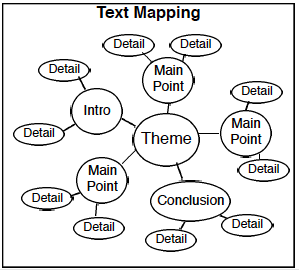
A Grab Bag of Texts in American Sign Language
with Cheryl Blue and Nancy Crane
of Minnesota Department of Human Services – Deaf and Hard of Hearing Services ~ Northeast
This project was created in 2001 by Digiterp Communications with funding and support from the Minnesota Region III Low Incidence Project and the Minnesota Department of Children, Families, and Learning
This 'n' That
Strategies for Practice
These texts were created specifically for interpreting practice, based on comments from educational interpreters that one of the great challenges they faced in preparing for national Interpreter Certification was that they rarely had the opportunity to see Deaf adults signing–and to exercise their interpretation skills going from ASL to English. These are not rehearsed texts and that is an intentional decision. Within them, there will be errors, digressions, and repairs–elements of ASL discourse that is all too often missing from materials produced for interpreting practice, but which is definitely a part of the interpreting experience when working with actual people. So, as you approach this work, don’t expect perfect, polished texts, but more natural language examples.
1. Do text analysis.
After each of the text’s description, there is a timecode listing how long the text is. Choose a shorter one and analyze it for meaning, structure, and different linguistic features. One helpful tool can be mapping out the main points and details in a format similar to figure at right.
2. Shadow and re-tell the texts.
In shadowing, while the movie is playing, attempt to copy as closely as possible the text. In the beginning, you may want to focus only on one feature; for example, facial expression or body movement. Eventually, try to copy as much of the text as you can. In re-telling, watch the entire text,and then try to re-tell it as closely as possibly, focusing on including the meaning and feeling of the text, rather than the individual signs used.
3. Do consecutive interpreting.
After analyzing the structure of the text, pause the movie after each main point. And do a consecutive interpretation. This may be easier to do in pairs and have one person use the mouse for pausing, and the other focus on the interpretation. To pause, simply click on the play/pause but-ton on the left hand side of the control bar at the bottom of the movie.
4. Do simultaneous interpreting.
Interpret them as you would have to in an interpreting situation. The important thing is to recognize that you have other options for practice,and you can work up to the actual simultaneous interpretation stage. As well, because there are 17 separate texts on this resource, you can choose from this “grab bag” to be able to work with a variety of situations in many different ways.
These strategies are only suggestions and there are certainly more things that can be done with them. It is the Region III – Low Incidence Project’s hope that you will find these to be useful tools in your work of skill development.
Meet the Signers
Cheryl Blue and Nancy Crane both work as consultants for Deaf and Hard of Hearing Services ~ Northeast. Cheryl is based in the office in Duluth and Nancy works out of Virginia. On this resource, they tell a wide variety of stories, ranging from personal narrative to more expository texts related to work situations and others. But before you move on to the actual texts, be sure to take the time to meet them here and get a sense of their signing style.
Texts with Cheryl
Personal Background
In this text, Cheryl gives a little background on her educational and work experi-ence. (6:08)
Spinach Quiche
Cheryl explains how to prepare a Spinach Quiche. Be wary of working with this one when you’re hungry. (2:54)
A True Ghost Story
A personal experience of an encounter with a ghost. (2:45)
Technology and Telecommunications
A brief history of how technological changes have affected Deaf people’s ability to communicate. (2:36)
A Visit to the Emergency Room
A story about a son’s accident and going to the hospital for treatment. (2:08)
Tainted Teeth
A story from working in a Mental Health program. (1:43)
Communication Tips
A sample of a talk to an employer who has just hired a deaf employee and is planning on setting up a meeting to figure out how best to work together.(3:06)
Idiom in the Classroom
A Middle School story of dealing with an English idiom. (1:18)
Working with the Police
A description of Cheryl’s efforts in working with the Duluth Police Department to improve relations with Deaf and Hard of Hearing people. (2:44)
Texts with Nancy
Personal Background
In this text, Nancy gives a little background on her educational and work experience. (4:23)
Counted Cross-Stitch
Nancy explains how to begin a Counted Cross-stitch project, including materials and the process of how to actually do the sewing. (6:35)
Interpreter Follies
Nancy explains about how an interpreter’s folly led to both some laughs and a conversation with the Governor. (2:04)
Long-Distance Pacemaker
Nancy explains about her father’s heart condition and how it is monitored. (1:45)
D.C. Driving
An experience Nancy had driving in Washington, D.C. while she was a student at Gallaudet. (2:22)
Mistaken Identity
A story of being frequently mistaken for someone else. (2:29)
A Daughter’s Long Recovery
An explanation of the long process of remedying Nancy’s daughter’s broken leg.(6:35)
Reunion Time
A story of attending her husband’s class reunion. (3:48)
Credits for Project
The staff of the Region III Low-Incidence Project:
Regional Low-Incidence Facilitator: Pat Brandstaetter
Administrative Assistant: Tasha Honkola
Language Models: Cheryl Blue & Nancy Crane
Audience for ASL Texts: Susan Lorenz
Lighting Assistance and Advice: Rolf Hagberg
Filming and Computer Design/Producer: Doug Bowen-Bailey Digiterp Communications
A special thanks to the State of Minnesota’s Deaf and Hard of Hearing Services ~ Northeast and for the willingness of Cindy Otto, the Regional Manager, to allow Cheryl, Nancy, and Susan to be a part of this project.
